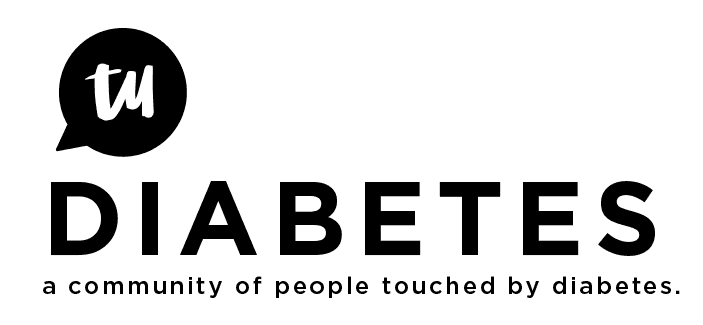WRITTEN BY: GINGER VIEIRA
Editor’s Note: The news shared below is from a recent and promising clinical trial. For more information on Type 1 diabetes research visit our research portal; to learn more about getting involved with clinical trials, click here.
The first patient dosed with VX-880 — a stem cell-derived potential therapy to treat Type 1 diabetes — has experienced a 91% decrease in their daily insulin doses, according to a recent press release.
In Phase 1/2 of its clinical trial, Vertex Pharmaceuticals Incorporated shared the staggering results after only 90 days of its ongoing investigational study, with the patient’s insulin needs reducing from 34 daily units down to 3 daily units.
VX-880 is manufactured using proprietary technology from Vertex Pharmaceuticals, a global biotechnology company that has multiple FDA-approved medications for cystic fibrosis. With their sights set on a breakthrough treatment for people with Type 1 diabetes, VX-880 is stem cell therapy approach that aims to restore insulin production and stable blood sugar levels.
WHAT IS TYPE 1 DIABETES?
To understand how VX-880 works, we must first understand the mechanics of Type 1 diabetes. In people with T1D, the immune system attacks and destroys the insulin-producing beta-cells in the pancreas.
Without these healthy cells, the pancreas cannot produce normal amounts of insulin. Insulin is the hormone that converts food to fuel. Without insulin, the body cannot use sugar from the bloodstream for fuel, causing blood sugar levels to rise to life-threatening levels.
Without insulin, the human body cannot survive. People with Type 1 diabetes must take manufactured insulin daily via injections, pump, or inhalation in an effort to maintain safe blood sugar levels.
While there are a variety of methods to deliver insulin and monitor blood sugar levels available today, they do not prevent those living with the disease from experiencing immense daily stress, life-threatening blood sugar fluctuations, rising healthcare costs, and an overall impact on their quality of life.
HOW DOES VX-880 WORK?
VX-880 works by essentially replacing the damaged insulin-producing cells in a person with Type 1 diabetes with healthy transplanted beta-cells. Because these are “allogeneic” cells — which means they come from outside the patient’s body — the patient must also undergo immunosuppression therapy to protect these transplanted cells from their body’s immune system.
VX-880 is delivered by an infusion into the patient’s hepatic portal vein, which is located near the pancreas. The patient in this ongoing study received a single infusion of VX-880 — but only half the dose that Vertex anticipates a patient might need — in conjunction with ongoing immunosuppressive therapy to protect the transplanted cells.
By providing the body with these allogeneic islet beta-cells and immunosuppression, the transplanted cells are able to successfully produce insulin and manage safe and normal blood sugar levels.
“As a surgeon who has worked in the field of islet cell transplantation for decades, this approach, which obviates the need for an organ donor, could be a game changer,” said James Markmann, M.D., Ph.D., Professor of Surgery and Chief of the Division of Transplant Surgery at Massachusetts General Hospital.
THE RESULTS OF VX-880 SO FAR…
It’s important to remember that these early results mean they cannot fully reflect the potential of this therapy’s ability to manage blood sugar levels.
The patient in the trial has lived with Type 1 diabetes for over 40 years. The duration of this person’s diabetes is significant since many of today’s ongoing efforts to effectively cure Type 1 diabetes are focused on those who are newly diagnosed.
“In the one year prior to treatment, the patient experienced five severe, potentially life-threatening hypoglycemic episodes,” explained the press release.
The patient not only tolerated both the infusion and immunosuppression well — with no serious adverse effects — they also experienced “robust improvements” in many areas related to diabetes health.
“These results from the first patient treated with VX-880 are unprecedented. What makes these results truly remarkable is that they were achieved with treatment at half the target dose,” said Bastiano Sanna, Ph.D., Executive Vice President and Chief of Cell and Genetic Therapies at Vertex.
“While still early, these results support the continued progression of our VX-880 clinical studies, as well as future studies using our encapsulated islet cells, which hold the potential to be used without the need for immunosuppression.”
Vertex’s encapsulation technology is also in early trial stages and offers the potential to protect the transplanted insulin-producing cells without immunosuppression.
“More than a decade ago our lab had a vision for developing an islet cell replacement therapy to provide a functional cure to people suffering from T1D,” said Doug Melton, Ph.D., Xander University Professor at Harvard and an Investigator of the Howard Hughes Medical Institute. “These promising results bring great hope that stem cell-derived, fully differentiated islet cells could deliver a life-changing therapy for people who suffer from the relentless life-long burden of T1D.”
With multiple active sites in the United States — and soon, Canada — Vertex will continue this phase of the trial with hopes for continued success.

